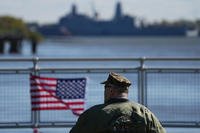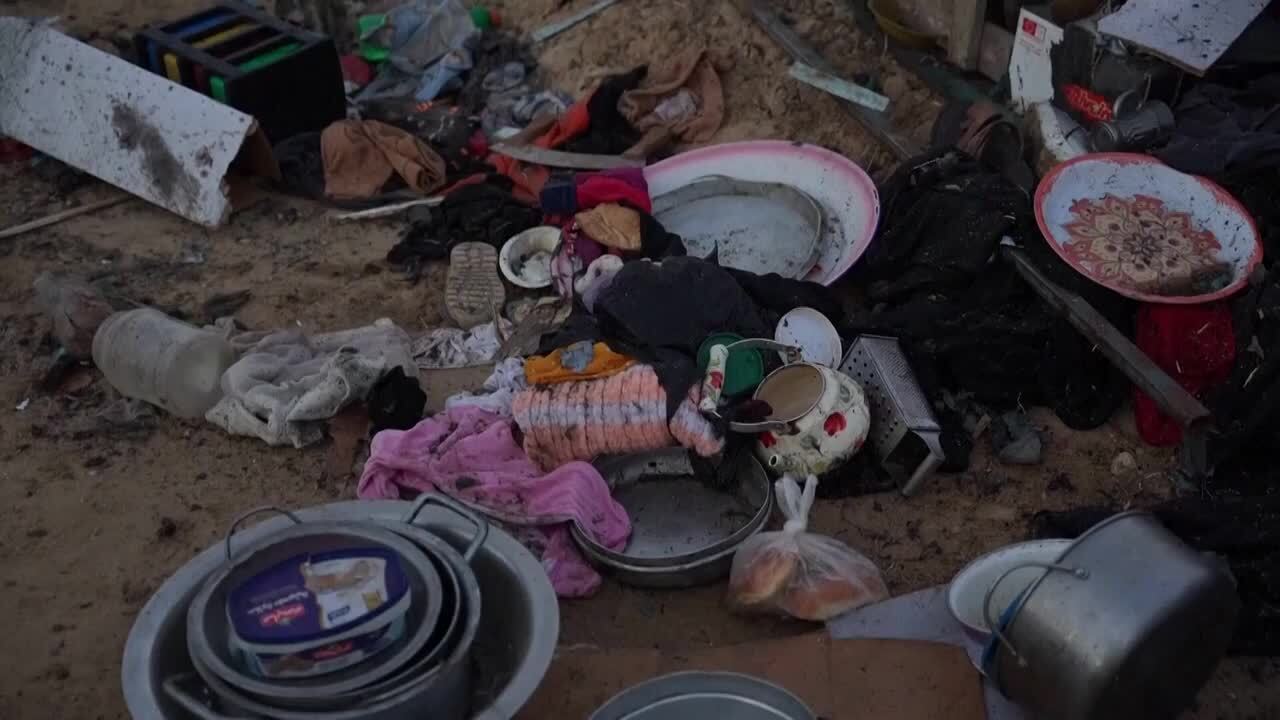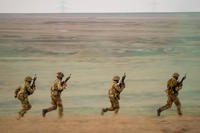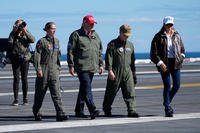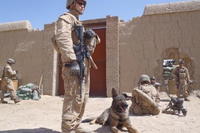U.S. Marine Corps MV-22B Ospreys are delivering aid to survivors and assisting with recovery efforts after a pair of deadly earthquakes hit the island of Kyushu in Japan’s Kumamoto prefecture.
Four of the tiltrotor aircraft from Marine Medium Tiltrotor Squadron 265 (reinforced), attached to the 31st Marine Expeditionary Unit left the Philippines Sunday to provide post-earthquake assistance, arriving at Marine Corps Air Station Iwakuni, Japan in the evening local time, according to news releases The air station, in Yamaguchi Prefecture, is a little more than 200 miles north of where the earthquake hit.
A 6.3-magnitude earthquake the night of April 14 was followed by a 7.3-magnitude quake April 16. The damage from both left 180,000 without shelter in Japan, according to news reports.
On Monday, two of the Ospreys left Iwakuni and arrived at Japan Ground Self-Defense Force Camp Takayubaru, a relief distribution point, to pick up supplies, including water, blankets, food, and toiletries, according to releases. The aircraft then dropped off the supplies at Hakusui Sports Park in Kumamoto’s Minamiaso Village.
In all, the Ospreys delivered four loads of relief supplies, making two trips within two hours in collaboration with the Japanese Ground Self Defense Force before returning to the air station.
“The Ospreys executed a long-range mission and were able to quickly deliver supplies to the austere location of the Hakusui Sports Park, demonstrating [the aircraft’s] ability to land in remote locations on unprepared surfaces and deliver badly needed aid, Col. Romin Dasmalchi, the 31st MEU’s commanding officer, said in a statement.
Ospreys were also used to survey the area hit hardest by the earthquake.
“Two MV-22s went out with [Dasmalchi] to assess the damage of the earthquake, possible landing zones, bring supplies to the impacted areas and get an overall understanding of the situation and what we need to do to react to it,” Lance Cpl. Zachary Schultes, a crew chief with VMM-265, said in a release. “I’m anxious to get out and help and be able to do something that’s making a difference.”
The 31st MEU is keeping four additional Ospreys staged on standby at Marine Corps Air Station Futenma, 600 miles away in Okinawa, to provide aerial support for recovery efforts if called upon, Marine officials said.
Officials emphasized that the Corps provided support at request of the Japanese government and in support of efforts undertaken by the Japanese Self Defense Force.
The Marine Corps’ amphibious MEUs are often tasked with providing humanitarian assistance and relief in the wake of a natural disaster. In May 2015, Ospreys and Marine Corps UH-1Y Venom helicopters were dispatched to Nepal to assist in the wake of a devastating 7.8-magnitude earthquake that left more than 7,000 dead.
-- Hope Hodge Seck can be reached at hope.seck@military.com. Follow her on Twitter at @HopeSeck.
Related Video:
Osprey Evolution



